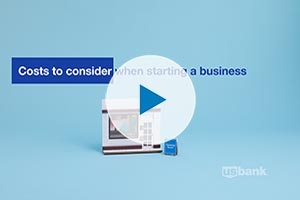
What is a home equity line of credit (HELOC) and what can it be used for?

How liquid asset secured financing helps with cash flow

The ongoing evolution of custody: Tips for renewing your custody contract

Key considerations for launching an ILP

Alternative assets: Advice for advisors

An investor’s guide to marketplace lending

What is a CLO?

Beyond Mars, AeroVironment’s earthly expansion fueled by U.S. Bank

ABL mythbusters: The truth about asset-based lending

Collateral options for ABL: What’s eligible, what’s not?

Can ABL options fuel your business — and keep it running?

Maximizing your infrastructure finance project with a full suite trustee and agent

6 timely reasons to integrate your receivables

Evaluating interest rate risk creating risk management strategy

Protecting cash balances with sweep vehicles

Tech lifecycle refresh: A tale of two philosophies

Changes in credit reporting and what it means for homebuyers

4 benefits of independent loan agents

At your service: outsourcing loan agency work

Middle-market direct lending: Obstacles and opportunities

Streamline operations with all-in-one small business financial support

How to fund your business without using 401(k) savings

Costs to consider when starting a business

How to get started creating your business plan

How to establish your business credit score

How jumbo loans can help home buyers and your builder business

When to consider switching banks for your business

5 tips to help you land a small business loan

Do I need a financial advisor?

Gifting money to adult children: Give now or later?

Financial steps to take after the death of a spouse

6 tips for trust fund distribution to beneficiaries

Resources for managing financial matters after an unexpected death

Student checklist: Preparing for college

The A to Z’s of college loan terms

Co-signing 101: Applying for a loan with co-borrower

Practical money skills and financial tips for college students

How I did it: Paid off student loans

Is online banking safe?

Personal loans first-timer's guide: 7 questions to ask

Common unexpected expenses and three ways to pay for them

Your financial aid guide: What are your options?

Is a home equity loan for college the right choice for your student

Parent checklist: Preparing for college

How to apply for federal student aid through the FAFSA

What to consider before taking out a student loan

Are you ready to restart your federal student loan payments?

Everything you need to know about consolidating debts

How to use debt to build wealth

What’s a subordination agreement, and why does it matter?

Understanding the true cost of borrowing: What is amortization, and why does it matter?

7 steps to keep your personal and business finances separate

Your quick guide to loans and obtaining credit

Dear Money Mentor: What is cash-out refinancing and is it right for you?

Overcoming high interest rates: Getting your homeownership goals back on track

What are conforming loan limits and why are they increasing

Money Moments: How to finance a home addition

How I did it: My house remodel

Is it the right time to refinance your mortgage?

What to know when buying a home with your significant other

These small home improvement projects offer big returns on investment

Should you get a home equity loan or a home equity line of credit?

Is a home equity line of credit (HELOC) right for you?

How to use your home equity to finance home improvements

How do I prequalify for a mortgage?

Can you take advantage of the dead equity in your home?

8 steps to take before you buy a home

6 questions to ask before buying a new home

4 questions to ask before you buy an investment property

10 uses for a home equity loan

Test your loan savvy

Take the stress out of buying your teen a car

Questions to ask before buying a car

What you should know about buying a car

How to choose the best car loan for you

